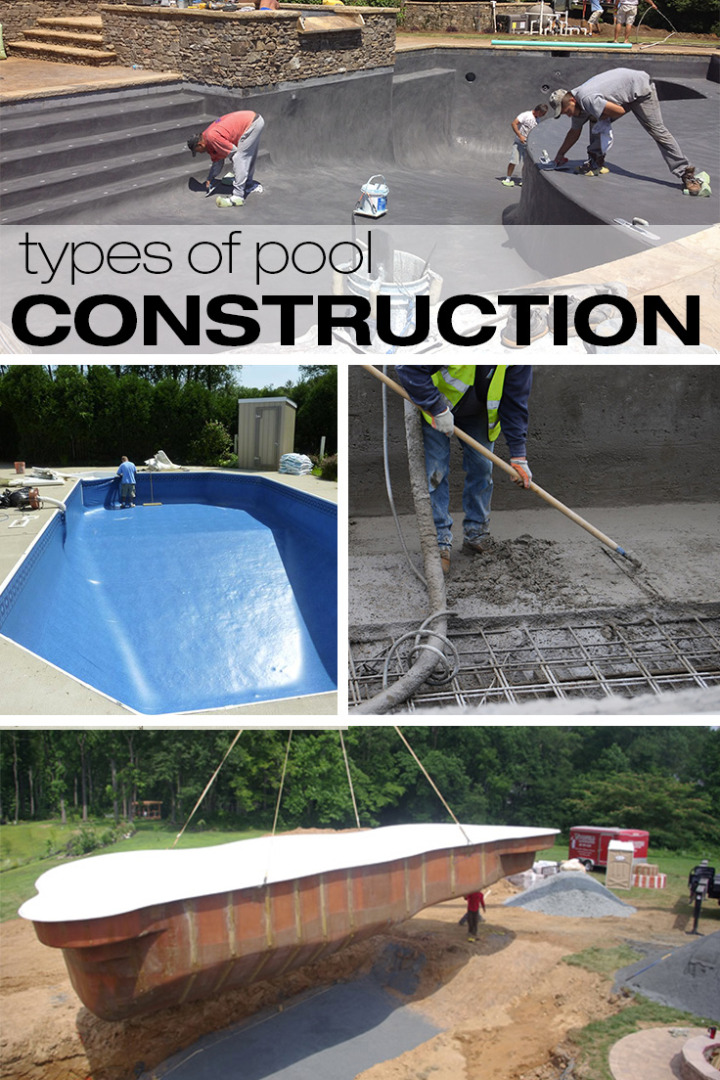If that empty backyard has been calling to you, asking to be outfitted with a new swimming pool, you have three options for an inground: fiberglass, vinyl liner, or concrete (gunite). Here are some pros and cons to consider before breaking ground, so you won’t break your budget.
Fiberglass Pool
How it’s built: Made from layers of fiberglass and resin, the one-piece “shell” is lowered into the bottom of the hole to rest on soft material. It is then backfilled around the outside with either sand or gravel.
Pros
Low maintenance: A fiberglass pool shell is nonporous with a gelcoat surface smooth to the touch. It is more algae-resistant, reducing the amount of sanitizing chemicals required to maintain the pool.
Reduced cost: A fiberglass pool shell generally requires little repair. There’s no liner to replace and no resurfacing is needed.
Faster installation: Usually in a matter of weeks, rather than months.
Cons
Size/Shape issues: Fiberglass pools come pre-fabricated which severely limits their size and shape.
Difficult color matching: Should a repair ever be needed, know that some manufacturers’ colored finishes may not match.
High initial cost: Plan to shell out more up front for a fiberglass pool compared to vinyl, and about the same for concrete.

Vinyl Liner Pool
How it’s built: A vinyl liner pool starts with a properly excavated the site, then building a wood, plastic or metal frame for the wall panels, pouring a sand base, and installing the liner.
Pros
Low initial cost: Made of metal or polymer wall panels, vinyl liner pools have the lowest initial cost of any of the three types of inground pools.
Unlimited shapes and sizes: A vinyl pool can be as long, wide or deep as you can afford.
Inhibits algae: The vinyl liner material is smooth to the touch and is also relatively non-porous so algae growth is minimal.
Cons
Higher lifetime cost: On average, a vinyl liner will last between 8 and 12 years and may cost a few thousand dollars to replace.
Worn over time: Chemicals used in a vinyl pool will fade the liner color and may cause wrinkles from top to bottom.
Handle with care: Be careful of pets, tree limbs and sharp objects which can tear a liner that’s only 20-30 mil thick.
Concrete (gunite) Pool
How it’s built: The process is fairly simple: excavate the hole, build a cage made of steel bars called rebar, and shoot the steel shell with concrete through a gun nozzle, hence the term “gunite” which describes the process not the material.
Pros
Size advantage: Concrete pools can be any size, shape, or depth.
Design flexibility: Whatever plaster, paint or tiles you choose for your pool design it can be as wild as your imagination.
Natural setting: Easily integrated into the landscape to be an outdoor showcase.
Cons
High lifetime cost: Expensive to re-finish. Resurfacing and re-tiling the pool can cost thousands.
High chemical cost: Concrete is very porous which means more chemicals and filtration are required to prevent algae.
Longer install time: Concrete pools can take as long as 2-4 months to install.

